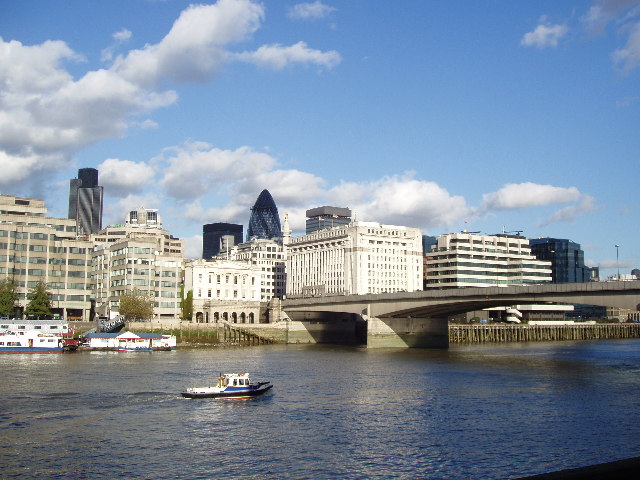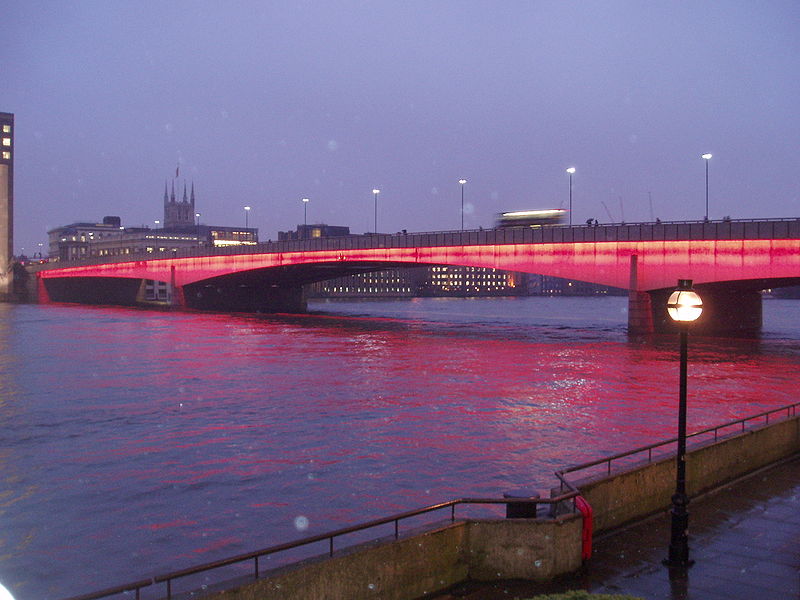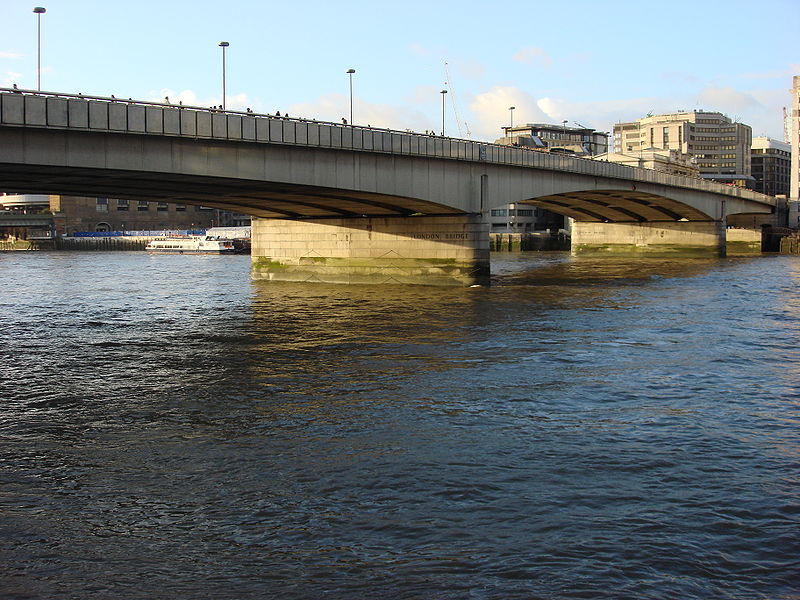London Bridge
London Bridge is a bridge between the City of London and Southwark in London, England, over the River Thames. Situated between Cannon Street Railway Bridge and Tower Bridge, it forms the western end of the Pool of London. On the south side of the bridge are Southwark Cathedral and London Bridge station; on the north side are the Monument to the Great Fire of London and Monument tube station.

London Bridge
Crosses River Thames
Locale Inner London
Design Prestressed concrete box girder bridge
Total length 262 m (860 ft)
Width 32 m (107 ft)
Longest span 104 m (340 ft)
Opening date 17 March 1973

It was the only bridge over the Thames downstream from Kingston until Putney Bridge opened in 1729. The current bridge opened on 17 March 1973 and is the latest in a succession of bridges to occupy the spot and claim the name. The bridge carries part of the A3 road, which is maintained by the Greater London Authority; the bridge itself is owned and maintained by the Bridge House Estates (see City Bridge Trust), an independent charity overseen by the City of London Corporation. The area between London Bridge and Tower Bridge on the south side of the Thames is a business improvement district (BID) and is managed by Team London Bridge.

History
A bridge has existed at or near the present site over the period from the Roman occupation of the area, nearly 2,000 years ago. The first bridge across the Thames in the London area, probably a military pontoon bridge, was built of wood by the Romans on the present site around 50 AD. Around 55 AD, a piled bridge was constructed, and the local Britons built a small trading settlement next to it—the town of Londinium. The settlement and the bridge were destroyed in a revolt led by Queen Boudicca in 60 AD. The victory was short-lived, and soon afterwards the Romans defeated the rebels and set about building a new walled town. Some of the 2nd-century Roman wall has survived to this day. The new town and bridge were built around the position of the present bridge, providing access to the south-coast ports via Stane Street (the A3 route) and Watling Street (the A2). The bridge fell into disrepair after the Romans left. As Londinium was also abandoned, there was little need for a bridge at this point, and in the Saxon period the river was a political boundary between the hostile kingdoms of Mercia and Wessex. With the impact of the Viking invasions, the reconquest of the Roman city by the kings of Wessex and its re-occupation by Alfred the Great, the political conditions arose for a Saxon bridge crossing to be placed here. However, there is no archaeological evidence for a bridge before Aethelred's reign and his attempts to stem the Sweinian invasions of the 990s. In 1014, according to a much later skaldic tradition, the bridge was pulled down by the Norwegian prince Olaf, as he was aiding King Aethelred in what, if true, was a successful bid to divide the defending forces of the Danes who held the walled City of London plus Southwark, thereby regaining London for the Anglo-Saxon king. This episode has been thought to have inspired the well-known nursery rhyme "London Bridge is Falling Down".

The earliest contemporary written reference to a Saxon bridge is in 1016, when it was by-passed by King Cnut's ships in his war to regain the throne from Edmund II "Ironside". The rebuilt Norman London Bridge was destroyed in 1091 by a storm that spawned a T8/F4 tornado, which also struck St Mary-le-Bow, and is known as the London Tornado of 1091. The repair or replacement of this was carried out by William II "Rufus" through forced labour, along with the works at the new St Paul's Cathedral and the development of the Tower of London. It was destroyed yet again, this time by fire, in 1136.